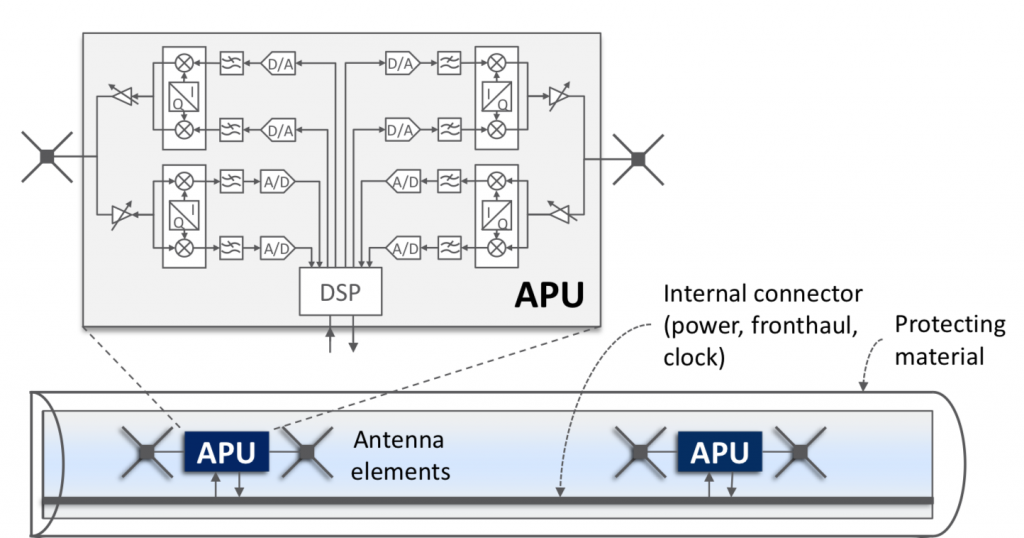Distributed MIMO deployments combine the best of two worlds: The beamforming gain and spatial interference suppression capability of conventional Massive MIMO with co-located arrays, and the bigger chance of being physically close to a service antenna that small cells offer. Coherent transmission and reception from a distributed MIMO array is not a new concept but has been given many names over the years, including Distributed Antenna System and Network MIMO. Most recently, in the beyond-5G era, it has been called ubiquitous Cell-free Massive MIMO communications and been refined based on insights and methodology developed through the research into conventional Massive MIMO.
One of the showstoppers for distributed MIMO has always been the high cost of deploying a large number of distributed antennas. Since the antennas need to be phase-synchronized and have access to the same data, a lot of high-capacity cables need to be deployed, particularly if a star topology is used. Ericsson is showcasing their new take on distributed MIMO at the 2019 Mobile World Congress (MWC), which is taking place in Barcelona this week. It is called radio stripes and some details can be found in a recent press release. In particular, Jan Hederén, strategist at Ericsson 4G5G Development, says:
“Although a large-scale installation of distributed MIMO can provide excellent performance, it can also become an impractical and costly ‘spaghetti-monster’ of cables in case dedicated cables are used to connect the antenna elements. To be easy to deploy, we need to connect and integrate the antenna elements inside a single cable. We call this solution the ‘radio stripe’ which is an easy way to create a large scale distributed, serial, and integrated antenna system.”

Example of a radio stripe where the antenna elements are integrated into a cable.
Ericsson is showing a mockup of radio stripes at MWC 2019, with a total length of 2 kilometer. For those who cannot attend MWC, further conceptual details can be found in a recent overview paper on Cell-free Massive MIMO. An even more detailed description of radio stripes can be found in Ericsson’s patent application from 2017.

Hi Emil,
Any idea in which way this is conceptually different from the pWave Daisy Chain developed by Artemis?
See: https://www.artemis.com/products
/Jakob
The deployment concept is rather similar, but I think what goes on inside the cables is rather different. The pWave Daisy Chain seems to contain small access points that are connected with network cables to a cloud RAN that does all the processing, while in the radio stripes the RF components are printed electronics on tape and the processing is done sequentially inside the cable. (See the images here: https://www.fiercewireless.com/wireless/ericsson-refines-antenna-stripe-technology-to-improve-coverage) But I actually don’t know how the pWave Daisy Chain works, so I can only guess.